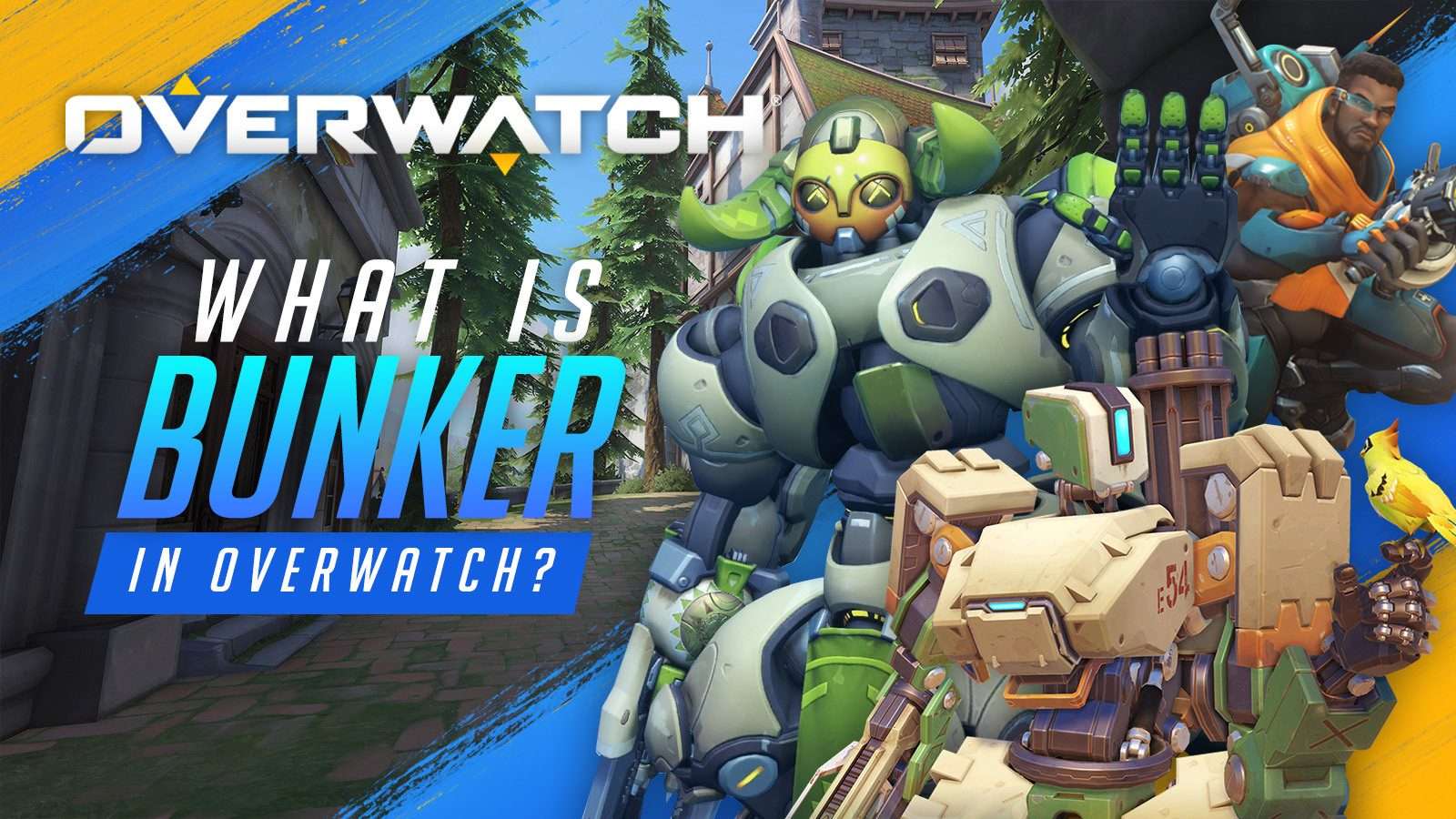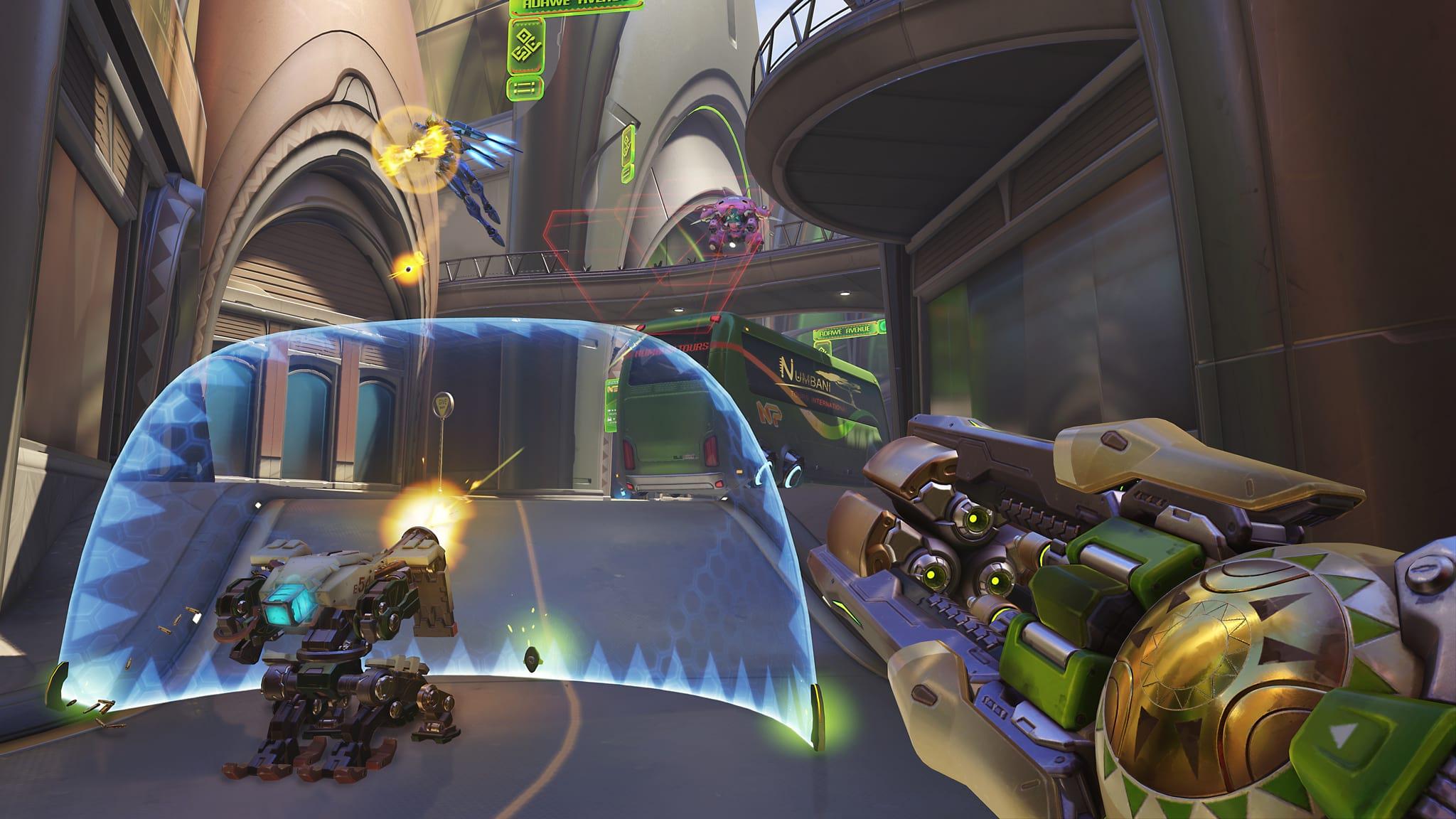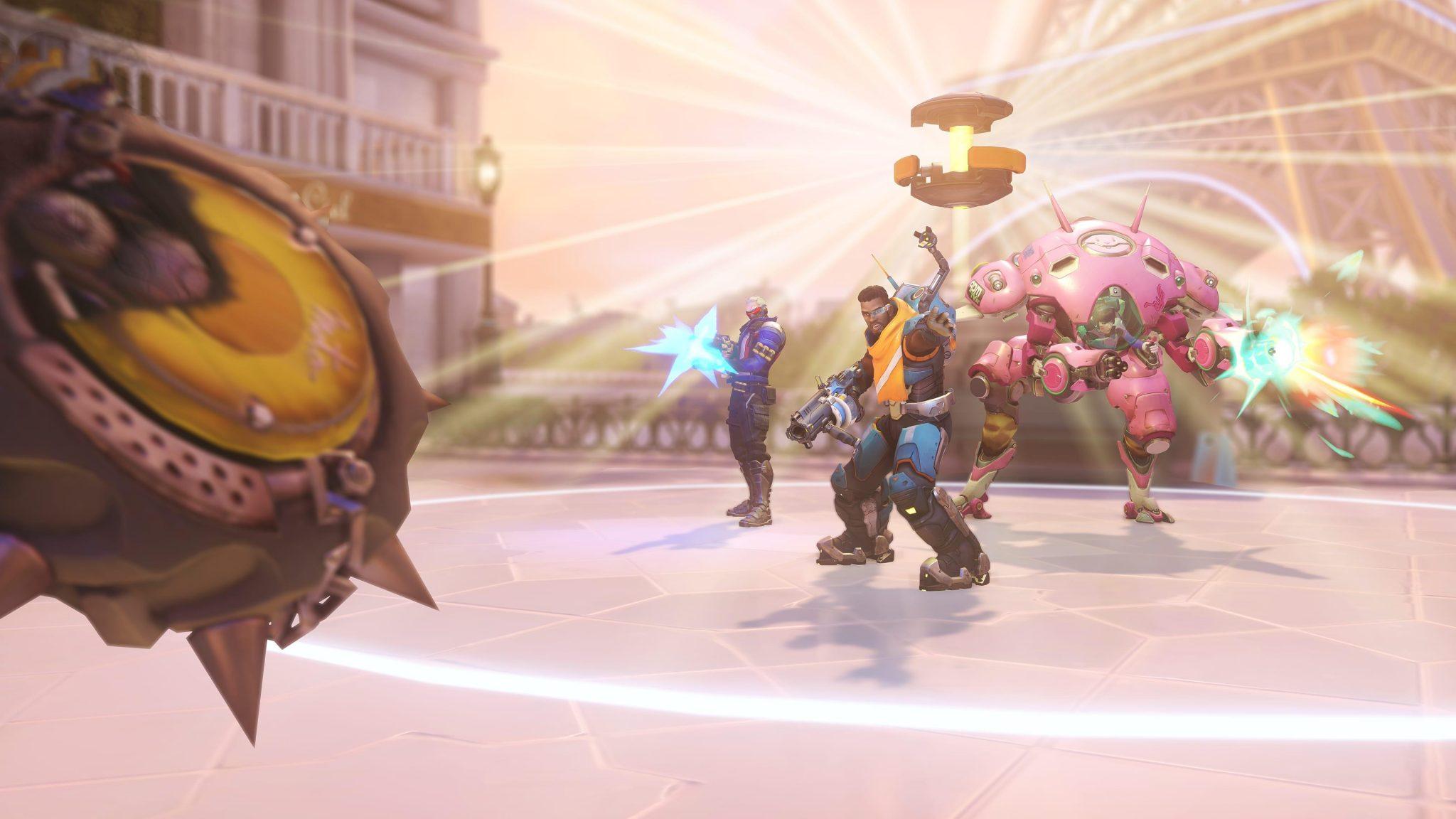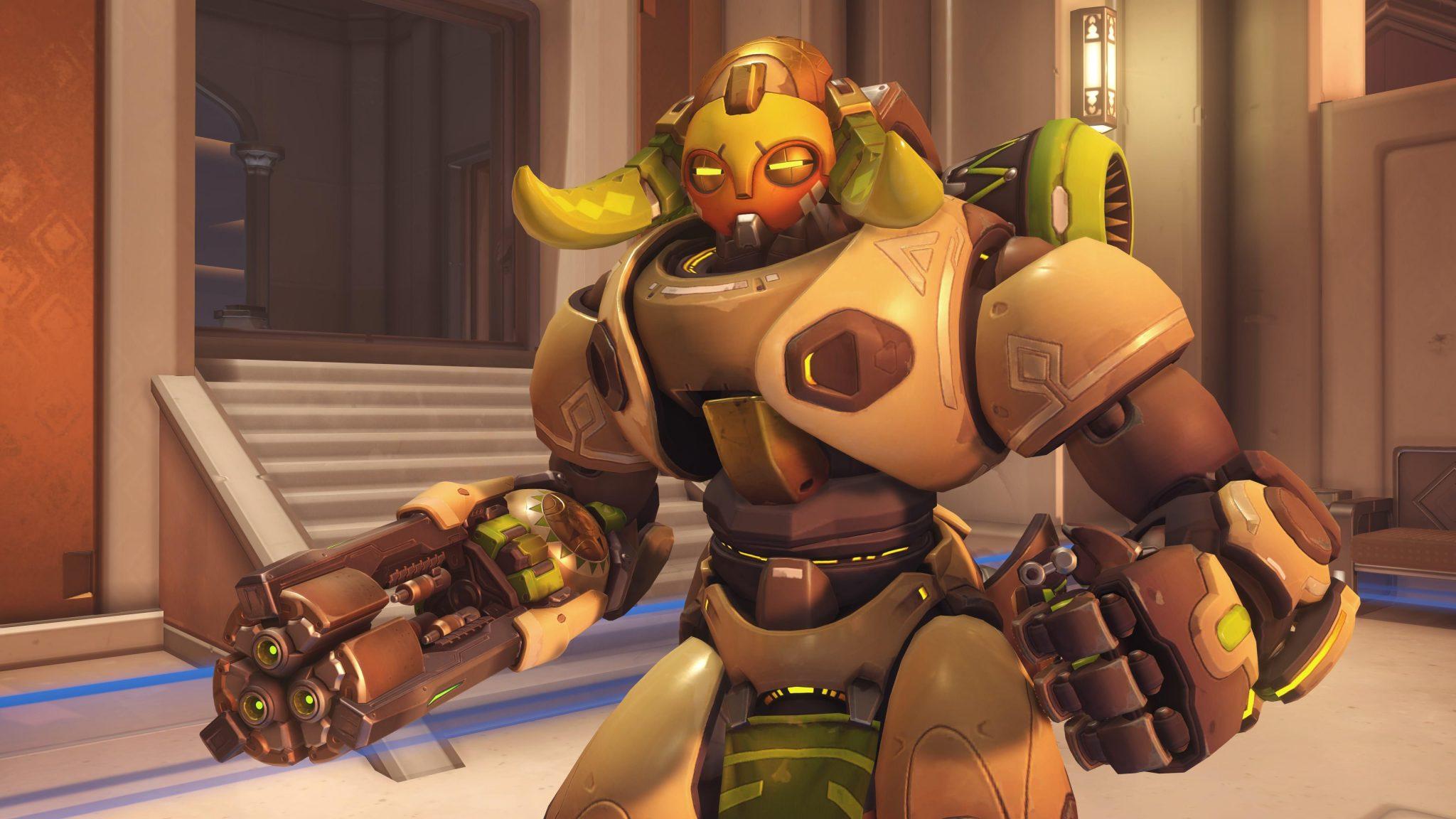Overwatch: What is the Bunker comp?

The reign of the infamous GOATS composition might finally be waning, but a new strategy is looking to claim the throne that might be even more frustrating to deal with.
In recent months, Overwatch players have once again seen a rise of the “Bunker” defensive strategy in online play.
Perhaps even more so than GOATS, which requires a fairly refined understanding of synergies and timings in order to play to its full potential, the Bunker composition is a ranked-play terror, frustrating offensive teams at lower ranks than GOATS typically reared its head in.
Variations of the Bunker composition have been used in Overwatch for a long time, but more recently the line-up has once again become one of the more prevalent strategies in the game.
Whether you’re looking to play it, beat it, or simply understand what it means when people say it, here’s a look at everything you need to know about the Bunker composition.

What is the Bunker composition?
The “Bunker” composition is so named because it is designed to set up in a single location and build a defensive “bunker” that is incredibly hard for the enemy team to break.
Like any composition, Bunker has a number of variants depending on map, how the Bunker team wants to play, and what heroes the enemy might be running, but there are three key heroes that typically underpin the current Bunker line-up.
- Read more: What is GOATS in Overwatch?
At the forefront – both literally and figuratively – is Orisa as the main tank. Orisa’s static Protective Barrier is both the marker signifying where the “bunker” should be set up, and its primary defensive tool.
From within the Bunker, the major source of damage will typically be Bastion. The fact that the entire purpose of the Bunker composition is to be static means that Bastion, who must be stationary in turret mode in order to output his maximum damage, isn’t punished by the constant need to reposition that usually characterizes Overwatch play.
While Bastion can be swapped out for the likes of Soldier: 76 or McCree for more versatility, if you manage to hold the Bunker successfully no other hero outputs the level of consistent damage that Bastion can.

Finally, one of the major reasons that the Bunker has once again ascended to being one of the more common and successful choices is the arrival of Baptiste. His ability to pump out area-of-effect healing with his Biotic Launcher and Regenerative Burst are both conducive to Bunker play, but it’s his Immortality field that’s particularly key.
The main counter to the Bunker is to try and focus down key heroes, and eliminate them quickly so that the rest of the team becomes vulnerable. With the Immortality Field, however, Baptiste can buy time to fend off an attack, also giving the enemies yet another thing to deal with.
Even Baptiste’s ultimate, Amplification Matrix, works well with the Bunker comp – while playing Bunker, most of the team is likely to be grouped up, meaning everyone can benefit from a well-placed Matrix.
Beyond the core three, the rest of the line-up can vary, but heroes without much mobility or those with area-of-effect abilities are more likely to synergize well with the composition.
 The Immortality Field is a key ability for keeping the Bunker alive.
The Immortality Field is a key ability for keeping the Bunker alive.Breaking the Bunker
Coming up against the Bunker composition in online play can be particularly frustrating as it’s arguably more difficult for a group of solo players to counter it than it is to pull off the Bunker successfully.
Executing the Bunker itself only really requires that the team agrees to the strategy – assuming all of the heroes set up in the same place, the natural tendencies of each hero should help to maintain the Bunker themselves.
Breaking the Bunker, however, requires a greater degree of coordination. As the Bunker will usually be capable of deflecting or recovering from any poke damage – meaning all you’ll be doing is feeding Supports ultimate charge – the most reliable way to break the bunker is with a coordinated all-in, looking to focus fire in order to take down individual targets as quickly as possible rather than spreading damage around.
One way to gain an early advantage is to utilize a pre-set Ana grenade designed to land on the Bunker’s location, which can prevent the enemies from healing when the team engages. Thanks to the Workshop, these can be identified and practiced with specific training modes like the Ana Nade Tool.
 The rise of Bunker has made Orisa one of the most-played tank heroes.
The rise of Bunker has made Orisa one of the most-played tank heroes.Will Bunker be nerfed?
Blizzard have previously shown an inclination to keep the meta evolving by force when necessary by making balance changes designed to prevent a single composition or strategy from being so powerful that players feel compelled to play in that particular way in order to succeed.
While the Bunker composition hasn’t yet come under quite the same degree of direct criticism as GOATS, there is an increasing frustration with the strategy that Blizzard might look to head off before it reaches GOATS levels.
One option for Blizzard would be to buff some of the potential counters to the Bunker composition, with some players suggesting that making Tracer’s Pulse Bomb more powerful could allow her to assassinate Bastions within a Bunker and thereby break the defensive set-up.
Alternatively, it’s very possible that the game’s next new hero, who should be due for a reveal by the start of July and a release by the end of the same month, could shake things up and introduce an entirely new dominant strategy.